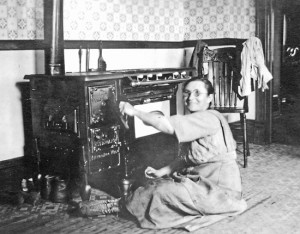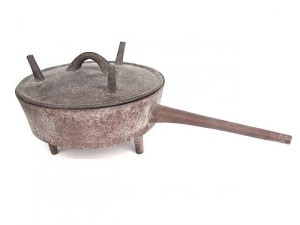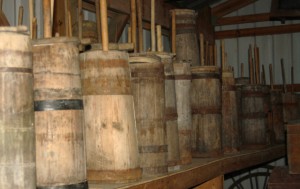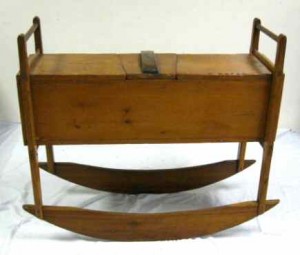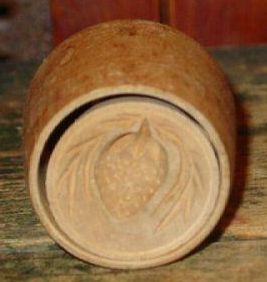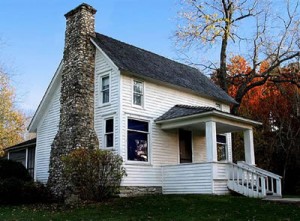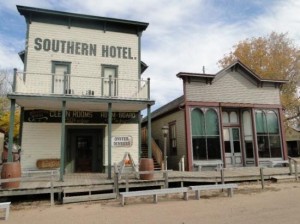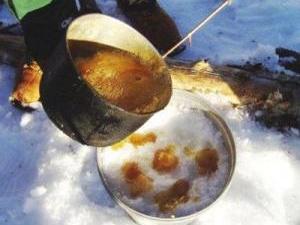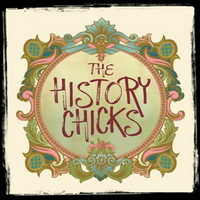On Plum Creek, Pa surprised Ma with a patent stove to go into the new board house he built. Seems like a great gift, right?
Hmmm.
“In pioneer times, it took almost an hour per day to care for a “modern” up-to-date stove. During a six-day period (I guess you got to rest on Sunday?), one put 292 pounds of coal in the stove, sifted out 27 pounds of ashes, and used 14 pounds of kindling. Twenty minutes were spent sifting ashes, twenty-four minutes were spent laying fires, one hour and forty-eight minutes were spent tending fires, thirty minutes in emptying ashes, fifteen minutes in carrying in coal, and two hours and nine minutes on blacking the stove to keep it from rusting…” -Susan Strasser in Never Done: A History of American Housework,
Does two hours of this look super fun to you?
Typically made of graphite (also known as black lead or plumbago), stove blacking was sold as a compressed dry cake in a box, in a tin as a paste polish containing oil or kerosene (not sounding very heat-tolerant!), or a bottled liquid. It was applied to the iron stove parts with a soft cloth, and then brushed vigorously. (Probably while weeping. )
Both Almanzo and Laura had run-ins with the stove blacking – Remember the “wallpaper incident” in Farmer Boy – and Laura’s setback when trying to surprise Ma in Little Town on the Prairie?
Laura and Mary showed Ma all the features of the new oven… but perhaps Ma was thinking with nostalgia about the low-maintenance “spider” she had used to cook the family’s meals on the way West:
4. Churning Butter is Way Easier Than PIe
Butter making during the time of Laura Ingalls Wilder’s childhood was the responsibility of the women and girls of the household (with an occasional, unwilling small boy pressed into service, until he could escape to the fields.)
Fresh milk was poured into shallow pans to allow the cream to rise, which was skimmed off and put into the churn. The skim milk left behind was often added to livestock feed on the farm!
Most churns were the basic “dash” type. These are what Ma, Mary, and Laura used to make butter during the times the family owned a milk cow:
But for greater quantities of butter, this “rocker” type of churn was more common. Often handmade on the premises, these churns vary so much that it is difficult to know exactly what Almanzo’s mother used for her commercial level of production (and Almanzo, too – much to his dismay). If a barrel were substituted for the wooden box on this churn, we’d get pretty close:
There is a fascinating website all about the history of butter making and selling at: http://www.webexhibits.org/butter/history-intro.html
And another site, with so many pictures of buttermaking tools of yore: http://dairyantiques.com/Home_Page.html
If you’d like to try to make your own, it couldn’t be simpler! Here’s what you need:
- A small jar (a jelly or sweet pickle jar is perfect)
- Heavy cream
- Stamina
Fill the jar two-thirds full of cold cream, then shake for ten to fifteen minutes (depending on the vigor of the “shaker”. That glob in the middle? Butter! After you’ve poured off the buttermilk (either you like to drink it or you don’t – give it a try!), you can add a little salt to taste. Just mix it in with a spoon.
To pass the time while churning, children often used to recite this traditional chant:
Come, butter, come! Come, butter, come!
(insert own name here) standing at the gate
Waiting for a butter cake…..Come, butter, come!
Or maybe you could learn that “Albania” song of Susan’s… and give that a whirl instead!
Here’s a bonus picture: Remember when Ma made the butter pats out of the grated-carrot-colored butter? Here’s what the press looked like!
Here is a list of Laura Ingalls Wilder homesites and museums:
Pepin, WI–
-
Wayside marker and Little House Replica – http://www.hmdb.org/marker.asp?marker=21299
-
“Laura Ingalls Wilder Days” held in early September
Independence, KS –
(**OK. Due to a legal kerfuffle with the producers of the TV show, this museum had to take down their website just recently. I personally think this is pretty shameful, given that this *is* the “Little House on The Prairie”… but I’m not the judge.**)
-
Try this number for directions: (620) 289-4238.
-
Or, the Independence Chamber of Commerce site at http://indkschamber.org/index.htm
We’ll update as new information emerges.
Walnut Grove MN–
- Main site, with info about both the dugout homesite and the museum: http://www.walnutgrove.org/index.html
- Pageant along Plum Creek held weekends in early/mid July
Burr Oak, IA –
Though not featured in the books, the Masters Hotel the family lived in is open to the public.
-
The Laura Ingalls Wilder Home and Museum: http://www.lauraingallswilder.us/
-
“Laura Days” in late June (including a 5K run!) 🙂
De Smet, SD–
-
Main site for the homesites and museums: http://www.liwms.com/
-
There is a 16 point walking tour of sites mentioned in the last few Little House books!
-
The Surveyor’s House has been fully restored and is open to the public.
-
40th year of the Laura Ingalls Wilder Pageant is 2011! Weekends in July – check above website for details.
Mansfield, MO –
-
Museum: http://www.lauraingallswilderhome.com/museum1.htm (Click on the photo galleries – the home page is pretty basic)
-
*Museum admission includes both the farm and rock houses at Rocky Ridge.*
Keystone, SD–
-
Home of Carrie Ingalls : Carrie Ingalls House Museum
-
*Museum open summers – THIS IS WHERE THE CHINA SHEPHERDESS IS!!*
Malone, NY–
-
Boyhood home of Almanzo Wilder. Museum: http://www.almanzowilderfarm.com/
2. False Fronts
We’ve all seen the Westerns in which lines of false-fronted wooden buildings faced each other across rutted dirt (or mud) streets. The false fronted building was not just a conceit of Hollywood!
From about 1880 to 1910, such buildings dominated the commercial centers of towns from New York to California, mostly in towns affected by some kind of economic “boom.” Mining, agricultural growth, or proximity to railroads all contributed to the prevalence of this style.
When towns were first founded, little thought was given to architecture – function was the key. Tents, log buildings, hastily built wooden shanties, and mud houses with canvas roofs served as blacksmith shops, trading posts, and eating houses. Once the economic picture began to improve, the drive to attract customers began, and this architectural style was born.
The basic idea was to create an elaborate façade for a more humble building. More expensive materials were used on this front wall, often hiding very simple, unpainted buildings behind. Cornices, carving, and triangular parapets were very common embellishments. Often, the extra space on the front wall was used to paint the establishment’s name and products. A main street lined with false fronts seemed larger and more prosperous than it actually was.
Laura mentions such buildings lining the streets of DeSmet, the only exceptions being a hotel and hardware store. These “real” two story buildings, the ones with “curtains fluttering at the upstairs windows” probably also included a modified, shorter false front technique, to even the roof line and to emulate the cast-iron, brick, or stone buildings which lined the streets of the more established cities of the day.
Many false-fronted downtowns were destroyed by fire, or replaced with the abovementioned “superior” materials as a town prospered. However, there are many examples still found all over the country, a remnant of our country’s unbridled growth at the turn of the century.
****************************************
1. Maple Sugar Candy –
This recipe, inspired by the “sugaring off” in Little House in the Big Woods, is extremely easy to make and even easier to eat far too much of!
You need:
About a cup of real maple syrup
1/4c salted butter
Some snow TIGHTLY packed in a pie pan and left outdoors
Popsicle sticks (or just spoon handles)
Cook the maple syrup and butter together on the stove until the temperature reaches the soft-ball stage, technically 238 degrees.
If you don’t have a thermometer, experiment with starting a timer as soon as you see it boil, then go for 6 more minutes.
BE CAREFUL! THIS IS LIKE HOT LAVA!
Pour into a Pyrex cup, then go outside and pour into the snow in your pie pan.You can either pour it in lines, wait about thirty seconds, and roll it onto your sticks/spoonsORJust free-form little shapes, let them sit, and go out and get them one by one(if you don’t mind seriously sticky hands…)
EAT, EAT, EAT!!!
****************************************

